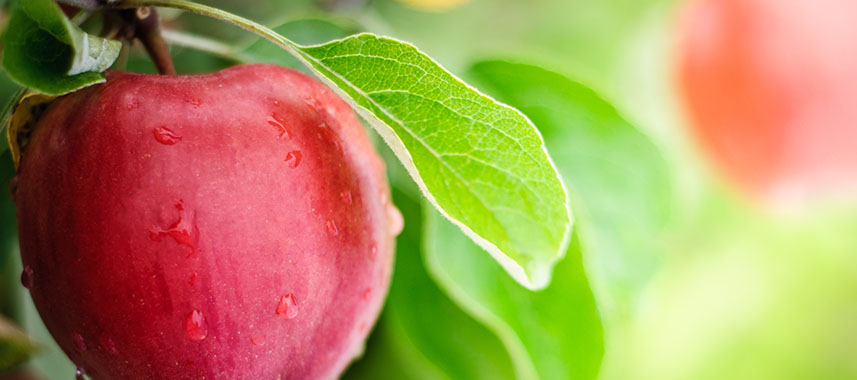Bite this: Apples may help with weight loss, diabetes and cardiovascular disease prevention
September 25, 2017
Lori Mager, M.B.A., RDN, LDN, CDE, Clinical Nutrition Manager at Northwest Community Hospital

School is back in session, leaves are falling and it’s “apple time” in Illinois. Although apples, a member of the rose family, are available year-round, the harvest period for apples grown in northern Illinois is August through early November. Illinois grows several types of apples, including Cortland, Gala, Golden Delicious, Honeycrisp, Jonagold, Liberty, McIntosh, Red Delicious, September Wonder (Fuji) and Zestar.
Benefits galore
Apples are one of the healthiest foods you can eat and have been studied for aiding with weight loss, protection against diabetes and cardiovascular disease, reducing cholesterol and risk of asthma, having anti-cancer effects and improving digestive health. These claims involve the low-calorie, high-fiber, rich-phytochemical profile and antioxidant activity of the fruit. Phytochemicals are compounds in plants that have protective benefits, while antioxidants help remove damaging free radicals caused by oxidation in our bodies.
One medium apple (fresh, raw and with skin, approximately 5 ounces) provides approximately 80 calories, 21 grams carbohydrate, 4 grams dietary fiber (both soluble and insoluble fiber) and various phytochemicals including quercetin, catechin and cholorgenic acid. Apples also provide some vitamin C and potassium, but are basically free of fat, cholesterol and sodium. To get the most out of apples, eat them with the skin on since it contains half of the fiber content and many of the antioxidants.
Apples are beneficial for weight loss due to their high fiber and low-calorie content. And there is some evidence consuming apples may help lower blood sugar levels and protect against diabetes. The soluble fiber in apples can help keep you full and slow down the absorption of nutrients, such as fructose, the natural sugar in fruits, and have a positive effect on blood sugar. However, as with all foods, monitor portions. Eating large amounts of apples can cause the carbohydrate to add up. A major fiber found in the flesh of apples is pectin, which has been shown to help lower cholesterol levels. Phytochemicals in apples, particularly flavonoids, have been studied for their reduced risk of cardiovascular disease, and have shown positive results. These flavonoids have been positively associated with general pulmonary health, as well. The pectin also has prebiotic benefits, as it feeds the beneficial gut bacteria and decreases the amount of harmful bacteria.
How to pick out the best apples in the bunch
When shopping for apples, look for a smooth, firm skin free of bruises, with intact stems and a bright color and shine, as well as a fresh smell. Extend the shelf life by storing fresh apples in a plastic bag in the refrigerator or in a cool, dark place. Apples left on a counter should be used within three days, but refrigerated apples can be used within three weeks.
Apples are versatile since they can be eaten raw as a quick snack, used in baking for a delicious dessert or combined with other ingredients for a healthy salad or side dish. With all of the health benefits this popular fruit can provide, it’s certainly beneficial to include an “apple a day” in your diet.
For a side dish your family is sure to love, try the recipe below.
Apple Couscous
Serves: 6
Ingredients
- 4 oz apple juice
- 5 oz water
- 1 McIntosh, or similar apple, with skin, diced 1/4 inch
- 1 cup couscous (dry)
- 1 Tbsp raisins, seedless
- 1 Tbsp dates, pitted, diced 1/4 inch
- 1 dash each of ground cinnamon, nutmeg and allspice
- 1/8 tsp salt
Directions
Note: Prepare as close to mealtime as possible to avoid a sticky product.
- Bring apple juice and water to a boil.
- Stir in couscous, apples, raisins, dates, cinnamon, nutmeg, allspice and salt. Mix well. Remove from heat. Cover tightly and let stand 10 to 15 minutes or until all liquid is absorbed. Fluff with a fork.